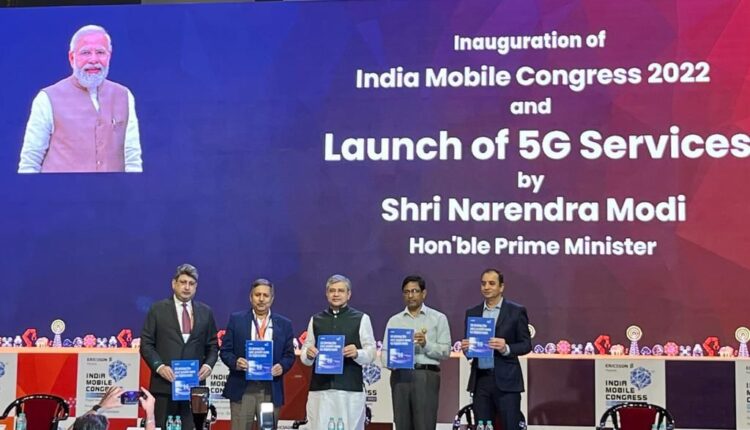5G set to become a connectivity fabric for the country – KPMG in India report
KPMG in India, in association with IMC, has today launched a report titled “5G driving the next growth wave for Digital India” at the India Mobile Congress 2022. This report provides a roadmap to organisations in ICT sector to re-purpose, re-engineer and re-position their offerings for an increasingly complex and demanding enterprise world. It also offers recommendations for a successful 5G roadmap and implementation.
KEY HIGHLIGHTS FROM THE REPORT:
- Approx. 50 per cent of Indian enterprises point towards increased budgets, especially for non-time critical communications use-cases
- More than 85 per cent of enterprises across multiple sectors are expecting up to 20 per cent ROI on various 5G/industry 4.0 use-cases
- Globally almost 51 per cent of the enterprises are looking to deploy 5G in conjunction with other wired and unlicensed wireless technologies
- The top technical and operational business challenges envisaged for deploying 5G in India are network integration with legacy networks, faster technological changes (or low adaptability in a multi-vendor ecosystem), proving ROI and timelines and inconsistent network infrastructure
- Targeting efficiency, quality management and new revenue models are prime areas where 5G is expected to be deployed by enterprises
FOR A SUCCESSFUL 5G ROADMAP AND IMPLEMENTATION, FOLLOWING KEY ASPECTS COULD BE CONSIDERED:
- For Operators:
- There is a need to get the network engine rolling, hence CSPs will need to be swift in upgrading their cores to support all forms of communications. Network upgrades need continual focus on building network slicing, edge-AI compute models, beamforming, dynamic spectrum sharing, access technology-agnostic user equipment functioning and network analytics.
- It is imperative to build and market new 5G revenue streams. While robust networks and route to market are important in the 5G monetisation journey, it is equally important to protect margins by reducing total cost of ownership (TCO) by becoming a connected enterprise where front, back and mid office are connected through cloud native architecture where the traditional OSS, BSS are transformed and made nimbler
- For Government :
- A forward-looking policy paradigm that focusses on increasing the access of affordable services and devices across the nation is imperative
- Rollout of 5G now needs to be backed by speedier fibre deployment to improve the tower fiberisation from current levels. Speedier inclusion of new sources from bus depots to railway stations to street poles and street furniture, agile deployment and faster maintenance of such assets will be crucial.
- R&D funding levels from the government need to improve in conjunction with policies that lay down financial incentives for participating members such as system integrators, CSPs and other infrastructure vendors
- The importance of personal data compliance is increased with 5G deployment. A viable option to improve defence against cyberattacks is to combine private network infrastructure with a zero-trust security strategy with an automated threat management system. However, a comprehensive policy can set the tone and direction of private 5G deployment in the country.
The Draft Telecommunication Bill 2022 is a step in the right direction, as it consolidates the legal framework replacing existing laws with future ready legislation and aims at reducing ambiguity and promoting ease of doing business. The industry bodies, enterprises as well as government should consider brainstorming and building consensus on operationalizing this framework.
Yezdi Nagporewalla, CEO, KPMG in India, said, “5G will be a catalyst to India’s path of reaching 20% digital GDP (by 2025). Today amongst others, digital transformation initiatives through smart factory, remote healthcare, digital school are real and functioning. With 5G, many of these initiatives will achieve scale and acceleration. The Indian telecom market offers the right ingredients to have its justifiable impact. This impact could range upto 0.5% of incremental GDP growth due to elements of flexibility, low latency and expansive connectivity, all of which will have a positive impact on businesses and its users (direct and indirect).”
Commenting on the report, Purushothaman KG, Telecommunications Industry Leader, Head Digital Solutions, KPMG in India said, “Our study shows that 5G will become the most transformational accelerator to drive digital growth and achieve the larger vision of digital India. The new telecom bill has all the ingredients to drive a robust financial and structural reforms. Edge computing, AI based cloud services, open source intelligence and telemetry systems are expected to be pervasive. India will see 5G drive growth not only of the telecom sector, making it once again a sunrise sector, but drive the growth and digital transformation ambitions across industries.”


